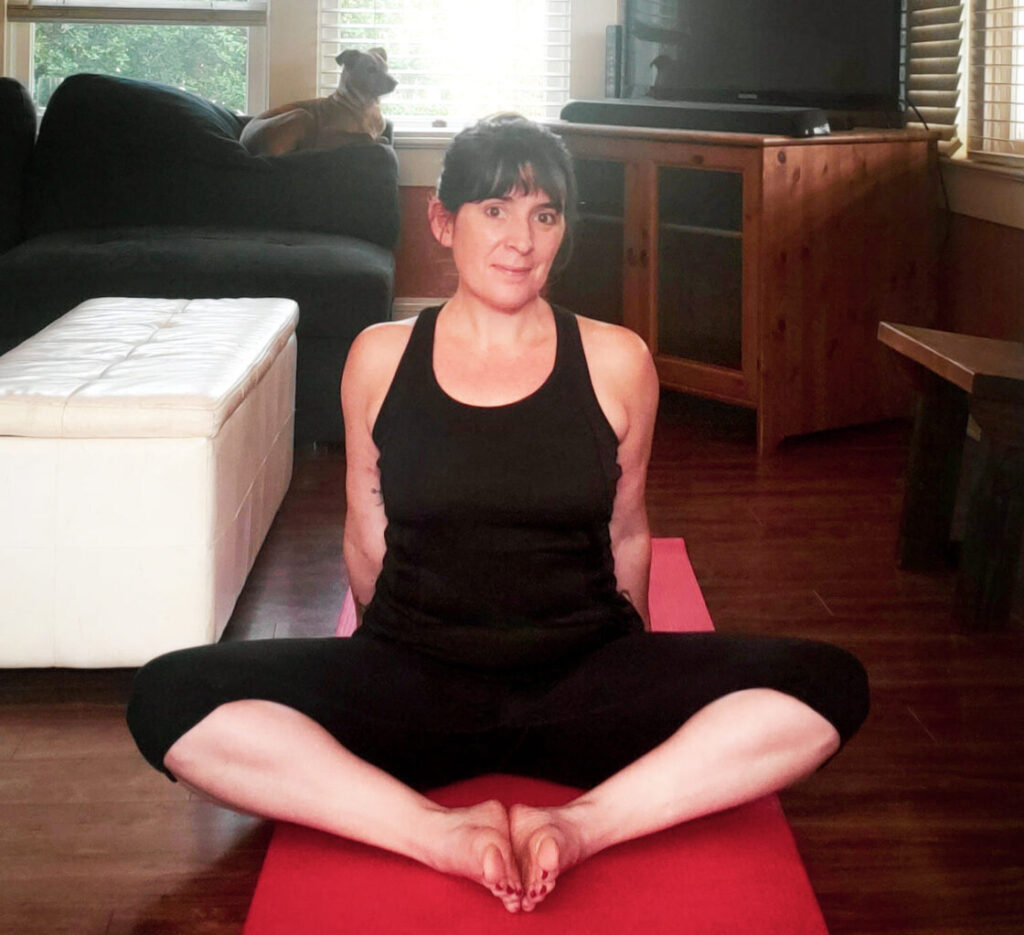With Covid-19 Sweeping Across the Country, it’s Time to Ditch the Studio and Practice Yoga at Home
With the Coronavirus forcing school closures and the cancellation of events and activities everywhere, it’s a great time to take your yoga practice home. The general recommendations for stopping the spread of Covid-19 include lots of hand washing and social distancing. Not sure what social distancing is? Social distancing is a public health practice that aims to prevent sick people from coming in close contact with healthy people in order to reduce opportunities for disease transmission. It can include large-scale measures like canceling group events or closing public spaces, as well as individual decisions such as avoiding crowds.
As we all know, yoga studios are often crowded, thus now is the perfect time to learn how to do your yoga practice at home.
As a yoga practitioner of 25 years, I think it’s fair to say that even without a pandemic like the Coronavirus making its way across the nation–reaping the full benefits, insights, and opportunities that yoga offers is difficult–if not impossible–without a solid home practice. Even if you are one of the lucky individuals who has both the time and the financial ability to make it to class every day when there’s no pandemic to get in your way, I would argue that a yoga home practice offers you the ability to deepen your understanding of, and relationship with, yoga and yourself in a way that you can’t when you are getting bendy with the collective.

Why You Should Practice Yoga at Home Even When A Pandemic Isn’t Occurring
The following are some of the reasons you should consider developing a home practice even when Covid-19 is no longer a threat:
- It’s hard to connect to your inner self when you are trying to follow a yoga instructor’s instructions or watching your neighbor because you aren’t sure what to do.
- Instructors create a sequence or flow for the class, not for you. At home you can tune into your own body and engage in a practice that is best for you, not anyone else.
- You control the playlist at home. For the first 11 years of my practice, my breath was the playlist. When you are at home, you control the atmosphere.
- It’s cheap. Hell, it’s free.
Over the last fifteen years, I have slowly developed my own approach to fitting yoga into my daily home life and I am often asked how. Common questions include: “How did you create a yoga practice a home?” or “How do you find time for your yoga practice at home?” or more recently, “How do you make your home yoga practice feel as natural as a class?”
Developing a consistent yoga practice at home takes time and there are challenges that you face along the way. The following are some of the approaches and “tricks” that help me create the space—and give myself the permission I need— to bring yoga into my home and take it with me wherever I go.

Tips for Creating a Yoga Practice at Home
Break your own rules
When I started practicing yoga at home, I had some pretty limiting ideas about what would make a home yoga session legit. I was convinced I needed at least 45 minutes to an hour, and that each session had to include the Invocation to Patanjali (I practiced Iyengar Yoga exclusively for 10 years) or a round of Aums, a preplanned sequence of poses, and a minimum of 5 minutes for savasana. In addition, my home had to be perfectly quiet without distractions like talking or the television running in the background in order to for my efforts to be worthwhile. As you can image, having three young children and full-time work made this incredibly difficult to execute on a regular basis. As a result, my home practice was sporadic at best.
It was only after I gave myself permission to break my own rules that I began finding the space I needed for a yoga practice at home in my daily life.
My personal practice looks different every day. Sometimes I start with meditation, and sometimes I jump straight into yoga asana. I love a good savasana…but sometimes I don’t get mine in until I’m lying in bed at night. I have a great space in my office for a quick sequence or flow without distraction if my workday allows it, but quite often my yoga practice takes place in the living room with my family as they watch an evening show.
However I fit my practice in, every sequence, regardless of how long or short, no matter how it begins or ends, is legit. My body benefits from it, my nervous system responds to my breath (which automatically regulates itself to my movements and each shape), and I recognize the time I’ve taken to do something important for myself.
Every practice is perfect in its own way.

Remember: Every shape is a chance for sacred geometry to happen
This may be one of the most important truths. Sometimes your home practice may consist of a single pose—and that is enough. It seems incredible—impossible even—but it’s true. Some days my home practice looks like a single pose done with exceptional attention while waiting for my 10-year-old son to finish brushing his teeth and putting his pajamas on.
Consider this: a pose practiced is a chance for sacred geometry to happen. I used to wrestle with the idea that one pose counted as a practice. I felt like I was slacking on those days I only managed to fit one or two poses in, even though my whole physical and internal self felt otherwise.
Every pose is worth doing, even if it is the only pose you will do for that day. Perhaps your practice isn’t just about the yoga poses you do, but also believing in the worth of the yoga poses you have done.

Choose a Playlist OR Practice in Silence
I am often asked how I make my home practice feel as natural as a studio class. For some it just feels awkward to practice alone at home after learning in a studio. When you are flowing or holding yoga poses with a group of people, it’s easier to “get in the mood” and “in the moment” because “everybody’s doing it”.
When you are all alone, you are faced with yourself, and while the connection with the self is the most important one in yoga—it is also often the most challenging. Also, when you can’t look around for direction or depend on a teacher to guide your next move, it gets real awkward, real fast.
Creating a playlist full of songs you love can is useful for getting in the mood to move. I have Spotify playlists packed with songs that give me energy, relax me, or even help me process difficult emotions. I used to let the music help me create my home practice. Music is powerful. It helps us connect with emotions we might feel cut off from. It sparks our creativity and even helps us access movements we might otherwise be too bound up by self-consciousness or social anxiety to execute.
Music, pairs perfectly with a fledgling home practice.
Dedicate time every couple of weeks to creating a playlist or two that you can’t wait to listen to. Then roll out your mat and practice yoga like no one is looking (because they most likely aren’t)
Graduate to Practicing In Silence
It’s hard to find a yoga studio that allows students to practice in silence. In my opinion, the ultimate practice takes place with nothing to listen to but your own breath. This is especially useful when practicing yoga for anxiety.
Creating yoga practice at home can feel weird, awkward, challenging…even impossible. But the beauty of yoga is that it can be done anywhere, anytime, no yoga mat or trendy gear required. Creating a home practice is as simple as committing to intentionally executing one pose a day with absolute attention and focus for the full amount of time you are in it. The more often you do it, the easier it becomes and before you know it your home asana will feel as natural as practicing in class.
Yoga is a powerful tool that can improve mental health. Learn more about how yoga can help with mental health conditions such as depression in this article from BetterHelp.





